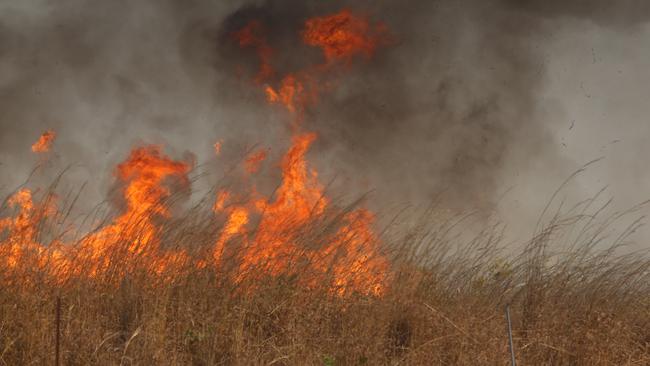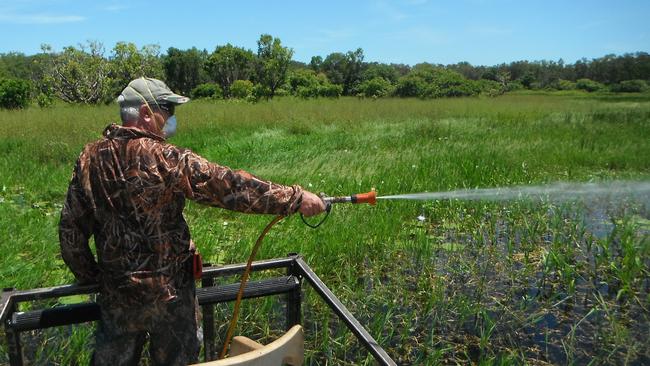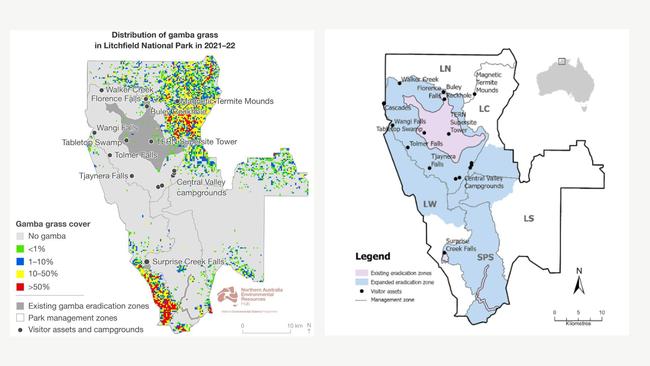$200k Gamba Army funding cut ‘detrimental’ to Top End wetlands
A 40 per cent reduction in Gamba Army funding in Budget 2023 will be ‘detrimental’ to Top End wetlands, advocates say. Read what’s behind the cut.
Northern Territory
Don't miss out on the headlines from Northern Territory. Followed categories will be added to My News.
Conservation groups say a cut to funding of the Gamba Army at a time when pesticide costs continue to rise will be detrimental to biodiversity in the Top End.
Budget 2023 committed $300,000 each year for the next two years to the Gamba Army, which it said built on previous investments of $500,000 each year for the past three years.
A total of $1.025m was invested by the government in Budget 2023 into its gamba management framework, which it said incorporated “diverse programs that contribute to managing the risks of gamba across the Top End”.
However, advocacy groups say the $200,000 decrease in comparison to previous years will have disastrous consequences to the fight against the invasive and highly flammable species.

NT Field and Game spokesman Bart Irwin said he had been observing the detrimental impact of gamba grass on Top End wetlands for a number of years, particularly in regard to the fast and hot fires caused by the plant burning through roosting areas.
“I could see it (gamba grass) having a great impact around wetlands and sometimes in wetlands, impacting magpie geese, ducks and every other bird that lives in those areas, and that’s what NT Field and Game is concerned about – the conservation of wetlands and the animals that live there,” he said.
The Gamba Army was established in 2020 to spray gamba grass in conservation areas and other areas with benefits to the community, initially receiving $500,000 in funding annually between 2020 and 2022.
Mr Irwin said since then the cost of pesticide and other materials needed to address grass infestations had almost doubled, which made the impacts of the funding cut even worse.
“When the chemical doubles and the money goes down you’ve got three fifths of f--k-all,” he said.

He said he believed the Territory government had reduced funds due to an increase in federal funding for Gamba Grass reduction.
The commonwealth government announced $9.8m in funding would go to gamba grass management in the Territory over four years in September 2022.
“We should have said ‘Wow we’ve got additional federal funding now this is a chance to defeat this weed’, instead of going soft on our effort,” he said.
He said when gamba grass got into wetlands in large stands it encouraged siltation, in turn destroying the wetland.
That had not start to happen in hunting reserves as far as he was aware however said “that’s where we’ll end up”.
“If they don’t control the gamba in the catchments the seed will end up in Howard Swamp, in the Leanyer Swamp and around Holmes Jungle, all those areas will becomes repositories for the gamba seed which will then become weed and destroy those wetlands.”

Gamba Grass Roots, an advocacy group raising awareness of the threats posed by gamba grass, had called for Budget 2023 to commit $1m annually over the next four years to the Gamba Army to combat the spread of the grass.
It also called for at least $10 million over 10 years to be committed to a response to the Litchfield National Park Gamba Mapping Report.
The report predicted 42,000ha of Litchfield National Park would be covered with gamba grass within the decade, eventually leading to ecosystem collapse.
Gamba Grass Roots gamba control campaigner Pauline Cass said it was hoped an increase in funding would see the Gamba Army deployed in other areas of the Top End that were inundated with the weed.
“It’s incredibly disappointing that we’ve seen a decrease instead,” she said.
The NT government has been contacted for comment.




